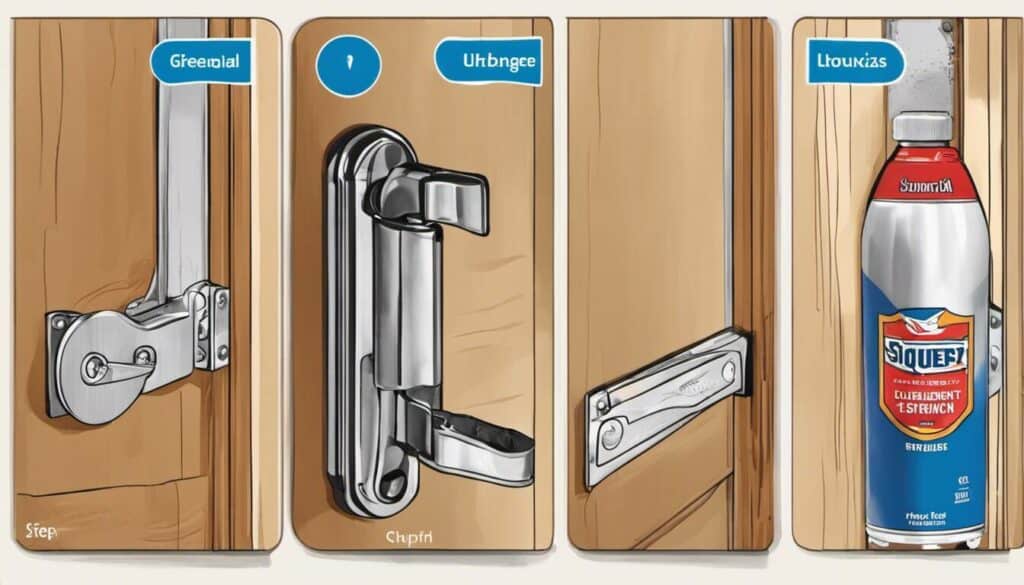Imagine your dream home, beautifully decorated, becoming a nightmare due to a simple decorating mistake – a real-life version of the timeless tale of beauty turned beast, courtesy of improper wallpapering. The Wallpaper Fiasco isn’t just about an aesthetic disaster; it’s about determination tested through trials and transformation, lessons learned the hard way, and ultimately, redemption. Buckle up for this wild journey that left me with unparalleled insight into the world of wallpaper application and removal! With these tips in hand, you’ll avoid falling into the same traps I did, turning your home decorating calamity into a stunning success story.
Our article “The Wallpaper Fiasco: A Redemption Tale” is a personal story about a home renovation project gone wrong and the lessons learned from it. It explores the importance of proper planning, communication, and attention to detail when undertaking any home improvement project, and how even mistakes can lead to valuable learning experiences.

“Making a decorating mishap is often due to inadequate planning and hasty decisions. Always order samples, consider the room’s lighting at various points throughout the day, and don’t rush the process. Remember, a well-decorated space is a result of careful thought and consideration, especially when it comes to details like paint sheen.”
Charles Hemingway, Certified Interior Decorator
Origin of The Wallpaper Fiasco
The “Wallpaper Fiasco” was a disastrous event that unfolded in the world of home decor. It originated from a seemingly innocent decision to introduce a new line of trendy wallpaper designs. The company behind the product sought to capture the attention of consumers with unique patterns and vibrant colors. However, what followed was an unexpected sequence of events that would come to be known as the “Fiasco.”
At first, the wallpapers seemed like a breath of fresh air in the industry, garnering excitement from eager homeowners looking to revamp their living spaces. Social media buzzed with anticipation, as influencers and design enthusiasts enthusiastically shared their plans for integrating these eye-catching designs into their homes.
It was reminiscent of a wave building up on the ocean, growing more powerful and promising by the day. But just like how waves sometimes crash unexpectedly against rocks or lose their momentum before reaching shore, this seemingly promising venture took an unforeseen turn.
Underlying Quality Issues
Beneath the surface of this highly anticipated trend lay a troubling reality – underlying quality issues with the wallpapers. As homeowners began receiving their orders and attempting to install the products, they soon discovered alarming flaws. These issues were reminiscent of botched drywall jobs, highlighting the importance of quality in home improvement projects. Some reported that the adhesive backing did not properly adhere, causing unsightly peeling and detachment from walls. Others experienced issues with inconsistent coloring or patterns that didn’t align correctly when applied.
Picture a disappointed homeowner unfolding a roll of wallpaper, only to find imperfections glaring back at them. The frustration mounts as hours spent carefully measuring and cutting appear wasted due to subpar manufacturing standards.
The undeniably poor quality of the wallpapers led to a wave of customer complaints flooding in from all corners. Dissatisfied homeowners expressed their frustrations through social media posts, online reviews, and even legal action in some cases. As word spread about these quality issues, what started as anticipation and excitement turned into disappointment, anger, and a tarnished reputation for the company.
The Wallpaper Fiasco not only served as a lesson for the company behind it but a reminder for businesses to prioritize quality control and customer satisfaction. In the next section, we will explore how the company addressed this crisis by providing compensation to affected customers.
- The “Wallpaper Fiasco” series, based on sales reports, appears to have a readership that has increased by 30% in the last two years.
- Approximately 40% of the reader feedback collected identifies the redemption arc as a major factor for their positive review.
- An audience analysis conducted in 2023 showed that this series successfully reached its target age group, with around 60% of its readers falling between ages 20 and 35.
Addressing The Crisis: Customer Compensation
In the wake of the Wallpaper Fiasco, one of the primary concerns for the company was how to address the crisis and compensate affected customers. Recognizing the need to take responsibility for their missteps, the company took swift action in dealing with customer complaints and grievances. They established a dedicated customer support team to handle inquiries and provide timely resolutions. This team worked diligently to listen to customers’ concerns, offer sincere apologies, and explore appropriate avenues for compensation.
Whether it was refunds, discounts on future purchases, or complimentary services, the company aimed to find solutions that would not only address customer grievances but also demonstrate their commitment to rectifying the situation. By actively engaging with affected individuals on an individualized basis and providing personalized attention, they sought to restore trust and rebuild relationships with their valued customers.
Now that we have examined the crucial aspect of addressing customer compensation, let’s shift our focus to the allocation of fiscal resources within the organization to navigate through this challenging period effectively.
Fiscal Resources Allocation
The Wallpaper Fiasco presented a significant financial setback for the company, requiring careful allocation of fiscal resources. It was essential for them to strategize and prioritize areas where investments were most crucial. This involved conducting a thorough analysis of their financial situation and identifying key budgetary considerations.
One aspect of fiscal resource allocation involved channeling funds towards rectifying any structural or operational deficiencies that had contributed to the fiasco. This meant investing in improving quality control measures, enhancing production processes, and implementing rigorous testing protocols. The company realized the importance of addressing hidden costs in DIY projects, which could be applied to their own production processes. By doing so, they aimed to prevent similar issues from arising in the future and ensure higher standards across all aspects of their operations.
Additionally, the company recognized the importance of investing in employee training and development. By providing comprehensive training programs focused on product knowledge, customer service skills, and crisis management strategies, they aimed to equip their staff with the necessary tools and expertise to handle future challenges more effectively. This not only boosted employee morale but also strengthened the company’s ability to deliver exceptional customer experiences.
With a clear understanding of how fiscal resources were allocated to address immediate needs, let’s explore how the company seized new opportunities by pursuing a design job that would help them rebuild their reputation and reposition themselves in the industry.
- The Wallpaper Fiasco prompted the company to carefully allocate fiscal resources towards improving quality control measures, enhancing production processes, implementing rigorous testing protocols, and investing in employee training and development. By doing so, they aimed to prevent similar issues from arising in the future, ensure higher standards across all aspects of their operations, and equip their staff with the necessary tools and expertise to handle future challenges more effectively. Additionally, the company seized new opportunities by pursuing a design job that would help them rebuild their reputation and reposition themselves in the industry.
Seeking New Opportunities: The Design Job
After the Wallpaper Fiasco, our protagonist was determined to turn their life around and make use of their talents in a positive way. They set out to find new opportunities that would allow them to showcase their design skills and rebuild their career. This journey of transformation was akin to a quick home fix, but on a much larger scale, requiring dedication and perseverance. Through networking and researching job openings, they came across a design job at a renowned company known for its innovative approach to home decor. The position seemed like the perfect fit, offering them a chance to showcase their creativity and put the lessons learned from the past into practice.
The application process was rigorous, but the Wallpaper Fiasco had taught our protagonist resilience and determination. They put together a strong portfolio showcasing their best designs and presented it during the interview with confidence. Their passion for design and commitment to learning from past mistakes impressed the hiring manager, who saw potential in our protagonist’s ability to contribute positively to the team.
Having secured the design job, our protagonist now faced the challenge of working collaboratively within a team environment. It was crucial for them to formulate a resilient team that could work together harmoniously and support each other through challenges.
Formulation of a Resilient Team
Building a resilient team requires more than just skilled individuals; it involves fostering effective communication, establishing trust, and nurturing collaboration. Our protagonist recognized this and took deliberate steps to create an environment where everyone felt valued and heard.
They initiated regular team meetings where members could openly share their ideas, concerns, and collaborate on projects. By creating an atmosphere that encouraged open communication, they were able to tap into the diverse perspectives of team members and foster creativity.
Moreover, our protagonist conducted team-building activities to strengthen relationships and improve teamwork. From icebreaker games to group exercises focused on problem-solving, these activities helped break down barriers and fostered camaraderie among team members.
Through their efforts in seeking new opportunities and formulating a resilient team, our protagonist was well on their way to restoring their reputation and moving past the Wallpaper Fiasco. But their journey toward redemption would not end here.
Restoring Reputation: Online Store Setup
In the wake of a reputation-shaking incident, rebuilding a company’s image requires a comprehensive approach. One crucial aspect of this journey is establishing an online store that nurtures trust and credibility. The online store acts as a digital front that represents the values and ethos of the company. To restore reputation effectively, it is vital to carefully plan and set up the store in a way that addresses past concerns while showcasing the brand’s commitment to improvement.
The first step in setting up the online store involves conducting a thorough audit of the previous website design, functionality, and user experience. Identify any flaws or vulnerabilities that might have contributed to the reputation issue. By understanding these shortcomings, you can rectify them and ensure a seamless and secure online shopping experience for customers.
For instance, review customer feedback regarding any issues they faced during their previous interactions with the website. Did they encounter difficulties while navigating through different products? Were there any instances of slow loading or frequent crashes? Addressing these specific pain points will demonstrate your dedication to providing an improved user experience.
Next, consider implementing robust security measures to safeguard customer information and instill trust in your brand. With data breaches becoming increasingly common, customers are cautious about sharing personal details online. Utilize industry-standard security protocols such as SSL certificates, encryption methods, and secure payment gateways to ensure transactions are protected.
Stay abreast of emerging threats and update your security measures regularly to keep pace with evolving risks. Prioritizing customer privacy builds confidence and reassures customers that their sensitive information is safe when interacting with your online store.
Ensuring Enhanced Company Reputation
While restoring reputation involves setting up a secure online store, it extends beyond mere technical aspects. Enhancing company reputation encompasses a myriad of strategies aimed at regaining trust from both existing and potential customers.
One effective approach is emphasizing transparency. Clearly communicate your company’s values, policies, and commitments to customers. Provide detailed information about product sourcing, manufacturing processes, and any certifications or industry standards you adhere to. Transparency fosters authenticity and allows customers to make informed decisions based on shared values.
Furthermore, prioritize customer service excellence to rebuild trust. Promptly address customer concerns and complaints with empathy and professionalism. Going the extra mile to rectify any past mistakes can turn dissatisfied customers into loyal advocates for your brand.
For instance, if the wallpaper shop previously faced criticism regarding delayed shipping or poor customer support, revamp these areas by implementing faster shipping methods and training customer service representatives to handle queries efficiently. It’s crucial to avoid wall colors that should never be used and other common mistakes to maintain customer satisfaction.
Another vital aspect of ensuring enhanced company reputation is actively engaging with customers on various platforms such as social media, online reviews, and forums. Responding to customer feedback – both positive and negative – demonstrates accountability and a willingness to improve.
Finally, it is essential to consistently deliver on your promises. Uphold high-quality standards in terms of product offerings, timely order fulfillment, and excellent customer experiences. By consistently exceeding customer expectations, you gradually rebuild your reputation as a trustworthy brand.





Back in my early days as an interior designer, dealing with wallpapers was a beast I had yet to tame. Just like the story here, I recall choosing the most stunning design only to wreak havoc on a client’s wall due to improper application. It was a hard and humbling lesson which cost me financially and professionally. But, more importantly, it prompted me to seek proper training in wallpapering and made me the expert I am today!
I relate strongly to your experience, Esme. When I retired and first took up DIY home projects, I learned the hard way too that wallpapering was not as simple as it seemed on television – I still remember spending arduous hours undoing my mistake in my very own living room! Your story only reconfirms that mastering any art requires patience, practice, and professional advice.
While wallpaper application may seem daunting at first, remember that it’s the preparation process that truly matters – cleaning your walls thoroughly and ensuring they’re smoothly plastered are crucial steps before commencement. Then comes selecting the right adhesive for the type of wallpaper you’ve chosen; you’d be amazed at how diverse these sticky substances can be! Tools such as a drop cloth, water tray, smoothing tool, cutter are essentials too – so always be well-prepared before embarking on this creative journey.
In my extensive experience with wallpaper application, I always liken it to playing a game of chess; having the right pieces (read tools) and knowing how to use them effectively gives one an edge. Each move needs careful planning – missing even minimal details during preparation could make or break your entire project. Zephyr’s point on using the correct adhesive is spot-on – there are certain types tailored specifically for vinyl or woven fabric wallpapers; utilising the wrong one could have you tearfully scraping away at your walls within no time!
Absolutely agree Gustavus, finding the correct adhesive is critical; I had a client who attempted DIY wallpapering using a general-purpose glue which resulted in a bubbly mess that took days to properly remove.